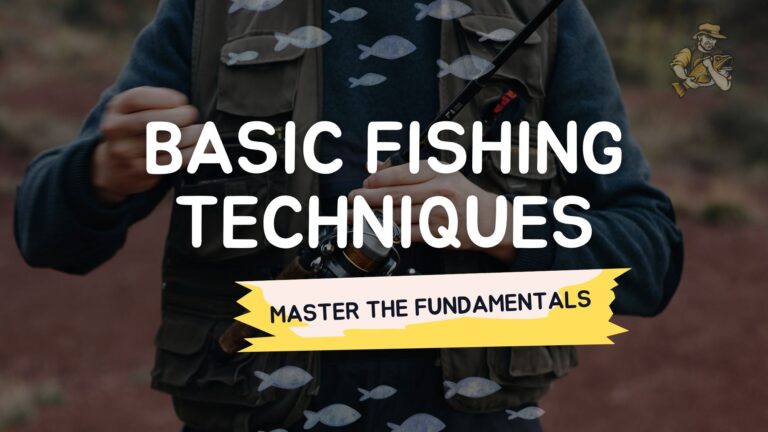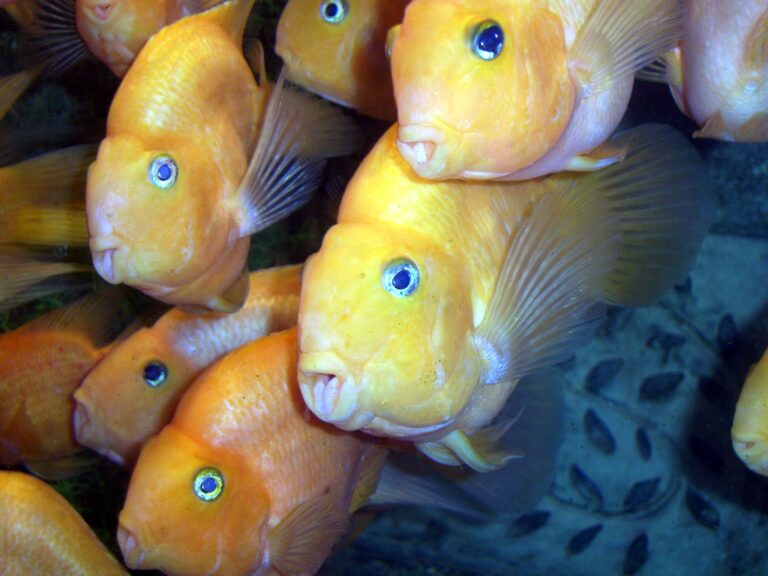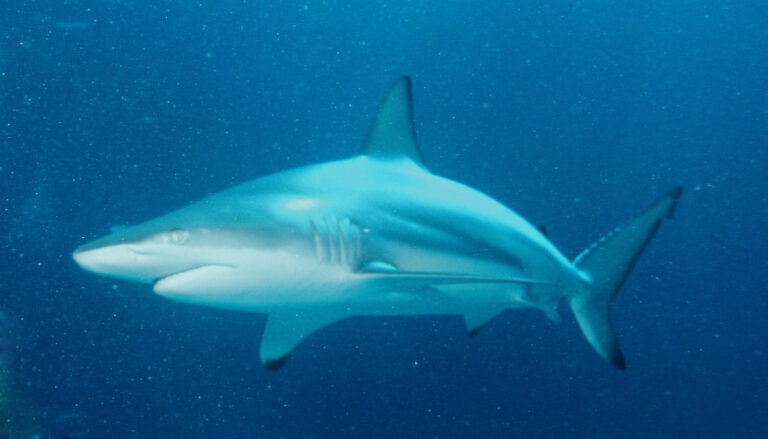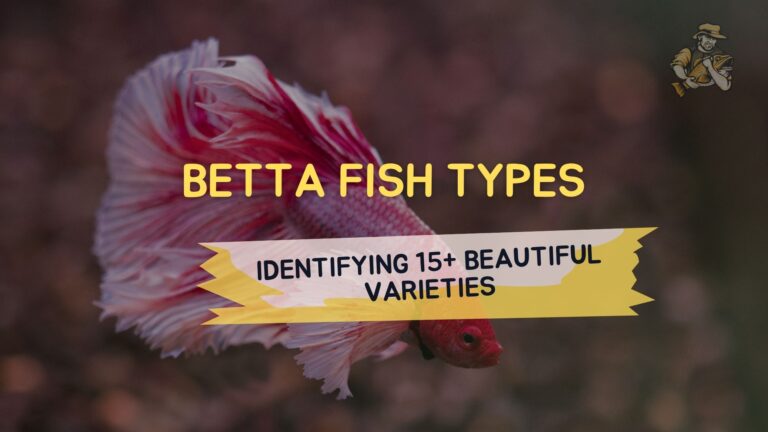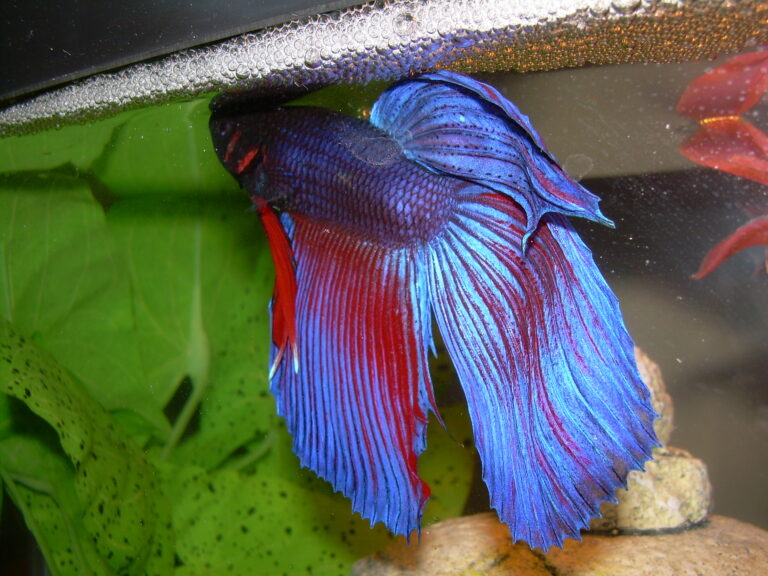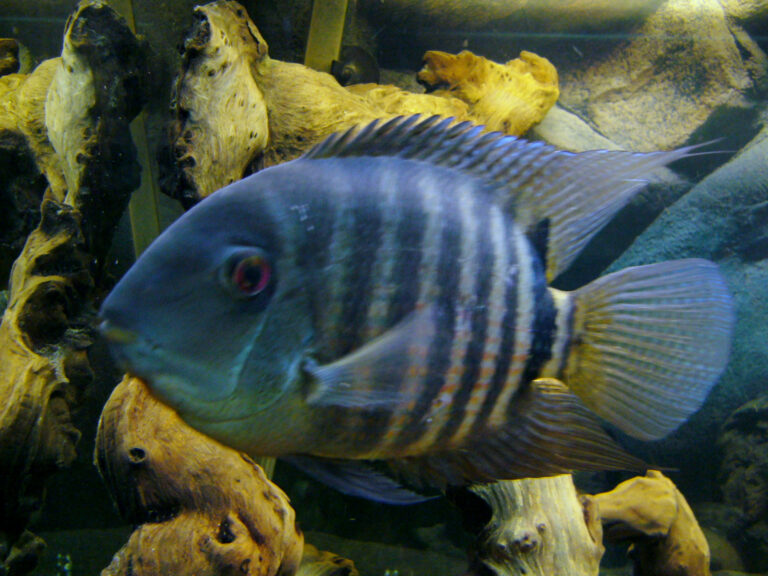How to Use a Spinnerbait: Complete Guide for Beginners
By Adam Hawthorne | Last Modified: April 26, 2025
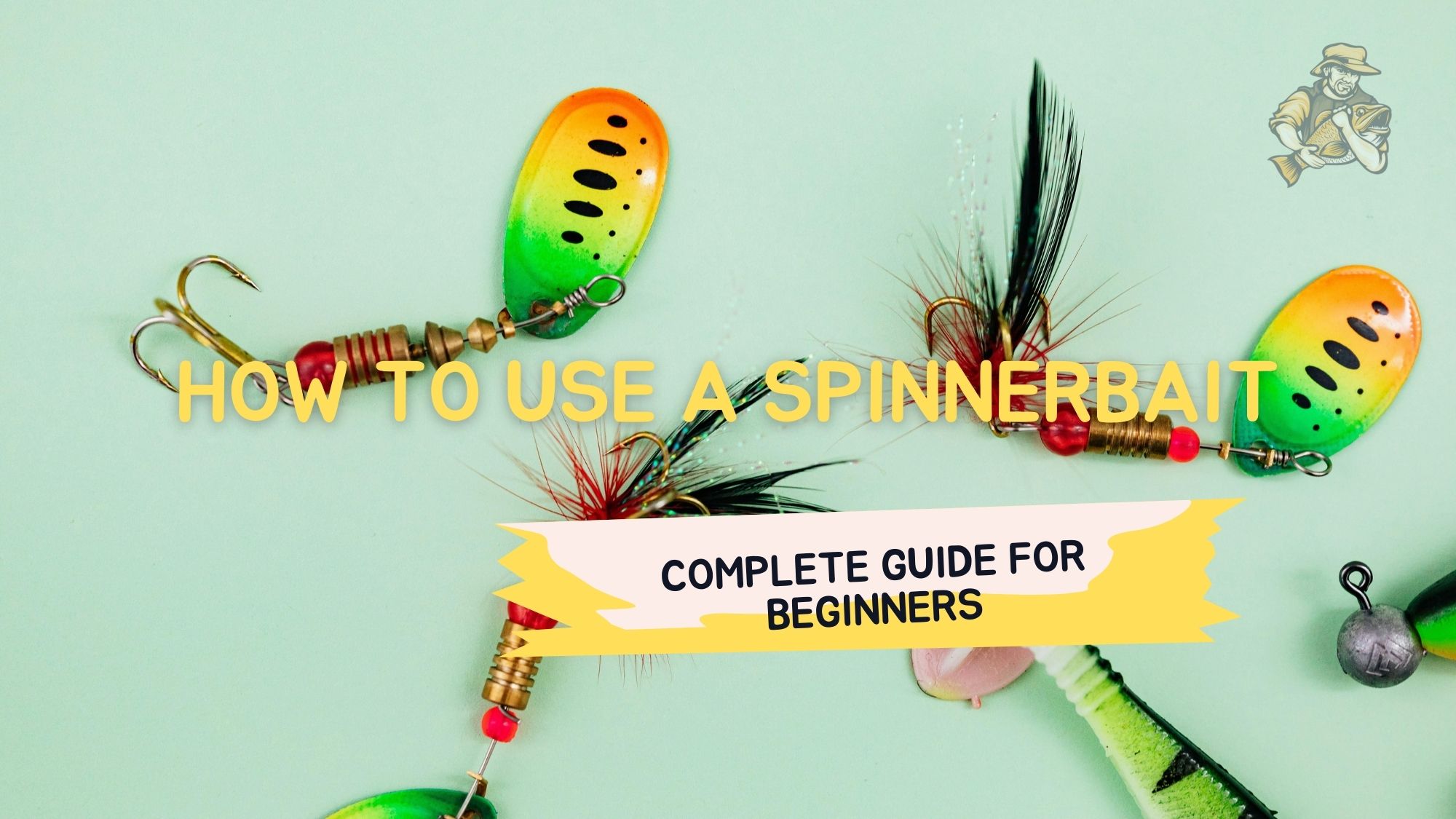
In my three decades of fishing experience, I’ve found few lures as versatile and effective as the humble spinnerbait. This oddly-shaped lure might look confusing at first glance, but I promise it’s one of the most user-friendly and productive baits you can add to your tackle box. Whether you’re targeting bass, pike, or muskie, learning how to use a spinnerbait properly can dramatically increase your catch rate.
How to Use a Spinnerbait Effectively
When I first started fishing with spinnerbaits back in the 1990s, I made every mistake in the book. I retrieved too fast, used the wrong colors, and fished them in all the wrong places. Through years of trial and error (and more than a few fishless days), I’ve developed a system that works consistently across different water conditions and seasons.
The beauty of spinnerbaits is their versatility. Unlike some specialized lures that only work in specific conditions, spinnerbaits can be effective year-round in various water clarities and depths. I’ve caught fish on bright sunny days and during heavy rainfall, in crystal-clear northern lakes and murky southern reservoirs.
What is a Spinnerbait?
Before diving into how to use it, let’s understand what makes this lure so special. A spinnerbait consists of a wire frame in a V or L shape with one or more metal blades attached to the upper arm, while the lower arm holds a skirted jig with a hook. This unique design allows it to create vibration, flash, and movement that trigger predatory fish into striking.
The main components include:
- Blades: Create flash and vibration (Colorado, willow leaf, or Indiana styles)
- Skirt: Provides additional visual appeal and mimics baitfish
- Head: Contains weight and often features a weed guard
- Hook: Usually a single strong hook hidden in the skirt
It’s this combination of elements that makes spinnerbaits so effective at attracting attention and generating strikes.
Choosing the Right Spinnerbait
Selecting the appropriate spinnerbait for your fishing conditions is crucial for success. I learned this lesson the hard way during a frustrating trip to Lake St. Clair where I stubbornly used the wrong blade type all day and went home empty-handed.
Here’s what I consider when selecting a spinnerbait:
- Water Clarity
- Clear water: Use smaller, more natural-colored spinnerbaits with silver blades
- Stained water: Choose medium-sized baits with gold or copper blades
- Muddy water: Go with larger, darker spinnerbaits with Colorado blades for maximum vibration
- Weather Conditions
- Sunny days: Silver blades provide more flash
- Cloudy days: Gold or copper blades often outperform
- Windy conditions: Heavier spinnerbaits (1/2 oz or more) cast better
- Blade Configuration
- Single blade: Good for faster retrieves and clearer water
- Double blade: Provides more vibration and lift, better for dirtier water
- Colorado blades: Maximum thump and vibration
- Willow leaf blades: More flash and less vibration, better in clear water
- Indiana blades: A compromise between the two
For beginners, I recommend starting with a 3/8 oz double-bladed spinnerbait featuring a Colorado and willow leaf combination. This versatile setup works in a wide range of conditions while you’re learning the technique.
Essential Spinnerbait Fishing Techniques
Now that you understand the basics, let’s dive into how to actually fish with spinnerbaits. These techniques have helped me consistently catch fish from Minnesota to Florida and everywhere in between.
The Basic Retrieve
The standard spinnerbait retrieve is simple but effective, making it perfect for beginners:
- Cast your spinnerbait to your target area
- Allow it to sink for 2-3 seconds (longer in deeper water)
- Begin a slow to moderate retrieve, just fast enough to feel the blades turning
- Keep your rod tip at about 10 o’clock position
- Maintain a steady retrieve speed
This straightforward approach works remarkably well in most situations. I still use this basic retrieve about 60% of the time when fishing spinnerbaits.
The Slow Roll Technique
In colder water or when fish are less active, the slow roll technique can be deadly effective:
- Cast to your target area
- Let the spinnerbait sink closer to the bottom
- Retrieve very slowly, just fast enough to keep the blades spinning
- Keep your rod tip slightly higher than normal
- Focus on maintaining contact with structure or vegetation
I’ve had tremendous success with this method during early spring and late fall when bass metabolism slows down. The key is patience and maintaining that painfully slow retrieve speed.
The Yo-Yo Method
When fish need a more erratic presentation, try the yo-yo method:
- Cast to your target area
- Let the spinnerbait sink to your desired depth
- Lift your rod tip from 9 o’clock to 11 o’clock
- Lower your rod while reeling up slack
- Repeat this lifting and falling action throughout the retrieve
This creates a rising and falling action that can trigger reaction strikes from hesitant fish. During a summer tournament on Lake Erie, this technique helped me land a 5-pound smallmouth bass after conventional retrieves failed.
Bulging the Surface
For shallow water situations, especially around dawn or dusk, try the surface bulge:
- Cast to your target area
- Begin retrieving immediately before the bait sinks
- Keep your rod tip high (11-12 o’clock position)
- Retrieve quickly enough to make the spinnerbait bulge the surface
- Occasionally twitch your rod tip for added action
This technique is particularly effective around shallow cover when fish are actively feeding. The wake and surface disturbance created by the spinnerbait can trigger aggressive strikes.
Spinnerbait Fishing Locations
Knowing where to throw your spinnerbait is just as important as how you retrieve it. Through years of trial and error, I’ve found several high-percentage areas that consistently produce fish.
Structure and Cover
Spinnerbaits excel around various types of structure and cover:
- Submerged vegetation: The weed guard and upward-facing hook make spinnerbaits relatively weedless
- Fallen trees and laydowns: Run your spinnerbait parallel to the structure
- Docks and pilings: Cast past the structure and retrieve alongside it
- Riprap and rocky banks: Bounce the spinnerbait off rocks for erratic action
- Points and humps: Cast beyond the structure and retrieve across the top
Depth Considerations
While many anglers think of spinnerbaits as shallow water lures, they can be effective at various depths:
- Shallow water (1-4 feet): Use lighter spinnerbaits (1/4 to 3/8 oz)
- Medium depth (5-10 feet): Mid-weight spinnerbaits (3/8 to 1/2 oz)
- Deep water (10+ feet): Heavy spinnerbaits (1/2 to 1 oz)
For fishing deeper water, allow more time for your spinnerbait to sink to the desired depth before beginning your retrieve. On Lake Michigan, I’ve caught smallmouth bass as deep as 15 feet using a 3/4 oz spinnerbait with a slow retrieve.
Seasonal Adjustments for Spinnerbait Fishing
One of the greatest attributes of spinnerbaits is their year-round effectiveness when used correctly. Here’s how I adjust my approach throughout the seasons:
Spring Spinnerbait Tactics
During spring, fish move shallow to spawn and feed aggressively. This is prime spinnerbait season:
- Use lighter spinnerbaits (1/4 to 3/8 oz)
- Focus on shallow spawning flats and coves
- Choose white or chartreuse skirts to mimic baitfish
- Retrieve slowly around newly emerging vegetation
- Target sunny banks where water warms faster
According to the U.S. Fish & Wildlife Service, spring warming patterns significantly impact fish activity levels and feeding behavior.
Summer Spinnerbait Strategies
Summer presents more challenging conditions but can still produce great spinnerbait fishing:
- Fish early morning and evening with surface bulging techniques
- During midday, switch to deeper water (8-15 feet)
- Use heavier spinnerbaits to reach deeper fish
- Focus on areas with current or water movement
- Look for shade from docks, trees, or thick vegetation
During hot summer days on Lake Erie, I’ve had success targeting smallmouth bass by using spinnerbaits around current breaks near deeper structure.
Fall Spinnerbait Success
Fall is another prime season for spinnerbait fishing as bass feed heavily before winter:
- Follow baitfish migrations into creeks and coves
- Match skirt colors to prevalent baitfish (often shad patterns)
- Use larger blades to create more vibration
- Focus on points and channel edges
- Vary retrieve speeds until you find what works
Winter Spinnerbait Techniques
While not traditionally considered a winter lure, spinnerbaits can still produce when others fail:
- Use the smallest blade configuration possible
- Slow your retrieve to a crawl
- Focus on sunny afternoons when water warms slightly
- Target steep banks that drop into deeper water
- Consider adding a trailer for added bulk and slower fall
Troubleshooting Common Spinnerbait Problems
Even experienced anglers encounter issues with spinnerbaits. Here are some common problems and solutions I’ve learned through years of trial and error:
Blades Not Spinning
If your blades aren’t spinning properly:
- Check for bent blade arms and straighten if necessary
- Ensure clevis (the part connecting the blade to the wire) moves freely
- Clean any debris from the blade and clevis
- Replace worn bearing beads if present
- Slow your retrieve to allow blades to start spinning
Missing Strikes
If fish are hitting but not getting hooked:
- Check hook sharpness and replace or sharpen dull hooks
- Adjust your hook-setting technique (firm but not excessive)
- Add a trailer hook for short-striking fish
- Slow your retrieve slightly to allow better hook penetration
- Consider using a stinger hook for particularly finicky fish
According to In-Fisherman, adding a trailer hook can increase hookup rates by up to 25% when fish are short-striking.
Line Management
Proper line choice affects spinnerbait performance:
- Monofilament: Good stretch for fighting fish but less sensitivity
- Fluorocarbon: Sinks faster and offers better sensitivity
- Braided line: Maximum sensitivity but may be too visible in clear water
I typically use 15-17 lb fluorocarbon for most of my spinnerbait fishing as it offers a good balance of sensitivity and strength while allowing the bait to achieve proper depth.
Spinnerbait Modifications and Customizations
Over the years, I’ve experimented with countless spinnerbait modifications. Here are some proven customizations that can increase your success:
Adding Trailers
Trailers can completely change the action and profile of your spinnerbait:
- Curly-tail grubs: Add undulating action and bulk
- Crawfish trailers: Great for mimicking crawfish in rocky areas
- Split-tail trailers: Create additional vibration
- Pork rinds (old school): Add bulk and a natural action
My favorite trailer is a 3-inch white curly-tail grub, which adds bulk and action without hampering the spinnerbait’s natural swimming motion.
Skirt Modifications
Don’t hesitate to customize the skirt:
- Trim the skirt shorter for a more compact profile
- Add contrasting color strands for added visibility
- Replace worn skirts to maintain optimal action
- Try double skirts in stained or muddy water
Research from Wired2Fish suggests that customized skirts can significantly increase strike rates in pressured fishing areas.
Blade Swapping
Different blade configurations dramatically affect performance:
- Replace standard blades with hammered blades for more flash
- Switch between Colorado and willow leaf based on conditions
- Add smaller Colorado blades near the head for additional vibration
- Experiment with painted blades on bright days
I keep a small tackle box with various replacement blades so I can customize my spinnerbaits on the water based on changing conditions.
FAQ: Spinnerbait Fishing Questions
What color spinnerbait works best?
The most effective spinnerbait color depends largely on water clarity and lighting conditions:
- Clear water: White, silver, or translucent skirts with silver blades
- Stained water: Chartreuse, white/chartreuse combinations with gold blades
- Muddy water: Black, dark blue, or firetiger patterns with large Colorado blades
When in doubt, white or white/chartreuse combinations work in the widest range of conditions. On my first fishing trip to the Everglades, a simple white spinnerbait outperformed all my exotic lures.
How fast should I retrieve a spinnerbait?
Retrieve speed should be adjusted based on several factors:
- Water temperature (colder = slower, warmer = faster)
- Fish activity level (less active = slower, more active = faster)
- Depth you’re targeting (deeper = slower, shallower = faster)
- Blade type (Colorado blades can be retrieved slower than willow leaf)
Start with a moderate retrieve just fast enough to feel the blades turning, then experiment with faster or slower speeds until you find what triggers strikes.
Can I use spinnerbaits in saltwater?
Yes, spinnerbaits work excellently in saltwater for species like redfish, speckled trout, and striped bass. According to Florida Sportsman Magazine, saltwater anglers are increasingly adopting spinnerbaits for inshore fishing.
When using spinnerbaits in saltwater:
- Choose models with stainless steel components
- Rinse thoroughly after each use
- Replace rusted components immediately
- Consider larger sizes for bigger saltwater species
I’ve had great success using 1/2 oz to 3/4 oz spinnerbaits for redfish in Florida back bays during falling tides.
What’s the best rod for spinnerbait fishing?
The ideal spinnerbait rod has these characteristics:
- Medium to medium-heavy power
- Fast action tip
- 6’6″ to 7’2″ length
- Comfortable for all-day casting
I personally use a 7′ medium-heavy fast action rod for most of my spinnerbait fishing. This provides enough backbone for solid hooksets while maintaining sensitivity to feel subtle strikes.
How do I fish a spinnerbait around vegetation?
Fishing spinnerbaits in vegetation requires specific techniques:
- Use a weedless spinnerbait with a quality wire guard
- Cast beyond the vegetation and retrieve through or over it
- When you feel the bait contact vegetation, give a quick snap to free it
- Use a slightly faster retrieve to keep the bait higher in the water column
- Consider a single willow leaf blade for better weedlessness
During my annual Everglades trips, I’ve found that gold Colorado blades with black skirts work exceptionally well in and around heavy vegetation.
Conclusion: Mastering the Spinnerbait
Learning how to use a spinnerbait effectively can transform your fishing success. From my three decades of experience, I can confidently say that few lures match the spinnerbait’s versatility and fish-catching ability across different conditions and seasons.
Start with the basic techniques described here, then experiment and develop your own approach based on your local waters and target species. Remember that confidence in your lure is critical – the more you fish with spinnerbaits, the better you’ll become at recognizing when and how to use them most effectively.
I’d love to hear about your spinnerbait fishing experiences in the comments below. What colors, sizes, and retrieves work best in your local waters?

Meet Adam Hawthorne
I’m a lifelong fishing enthusiast who’s spent years exploring rivers, lakes, and oceans with a rod in hand. At Fishing Titan, I share hands-on tips, honest gear reviews, and everything I’ve learned about fish and ocean life, so you can fish smarter and enjoy every cast.
Share:

Meet Adam Hawthorne
I’m a lifelong fishing enthusiast who’s spent years exploring rivers, lakes, and oceans with a rod in hand. At Fishing Titan, I share hands-on tips, honest gear reviews, and everything I’ve learned about fish and ocean life, so you can fish smarter and enjoy every cast.
Related Articles
-
Basic Fishing Techniques: Master the Fundamentals
There’s something magical about that first tug on your fishing line. I still remember mine, a scrappy bluegill on a summer afternoon that fought like…
-
Alaska Salmon Fishing: Planning Your Trip to the Last Frontier
I still remember the first time I hooked into a Kenai River king salmon. It was July 15, 2019, around 5:30 in the morning. The…
-
Blood Parrot Cichlid
The Blood Parrot Cichlid stands as one of the most distinctive and controversial specimens in contemporary aquarium culture. This hybrid fish, scientifically known as *Amphilophus…
-
Blacktip Shark
The Blacktip Shark (Carcharhinus limbatus) stands as one of the most recognizable and ecologically significant predators in tropical and subtropical waters worldwide. Distinguished by the…
Fish Species
-
Betta Fish Types: Identifying 15+ Beautiful Varieties
Walking into a pet store’s fish section always gives me that same feeling of wonder, especially when I reach the betta display. Those vibrant colors…
-
Diamond Tetra
The Diamond Tetra (Moenkhausia pittieri) stands as one of the most captivating freshwater fish species in the aquarium trade and its native South American ecosystems….
-
Siamese Fighting Fish
The Siamese Fighting Fish, scientifically known as *Betta splendens*, stands as one of the most recognizable and culturally significant freshwater fish species in the world….
-
Severum Cichlid
The Severum Cichlid represents one of South America’s most recognizable and ecologically significant freshwater fish species. Known scientifically as Heros severus, this robust cichlid inhabits…

